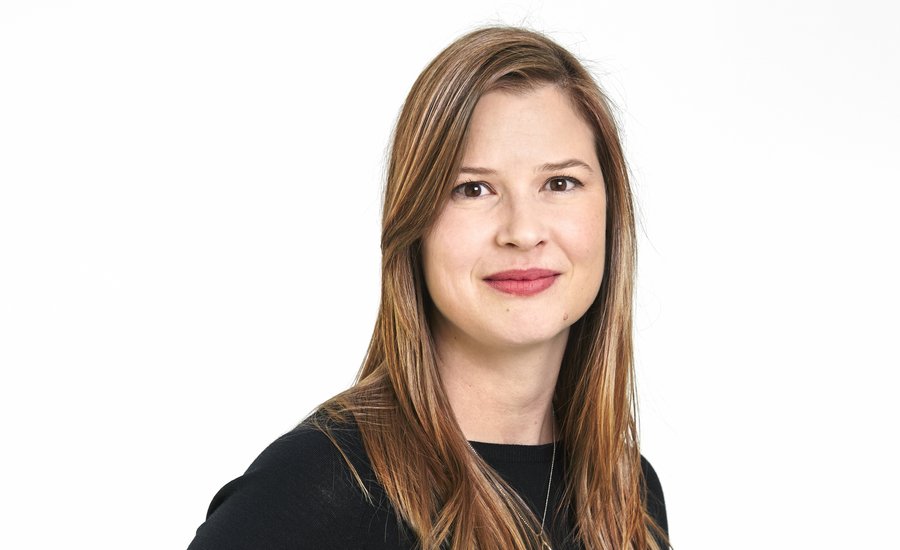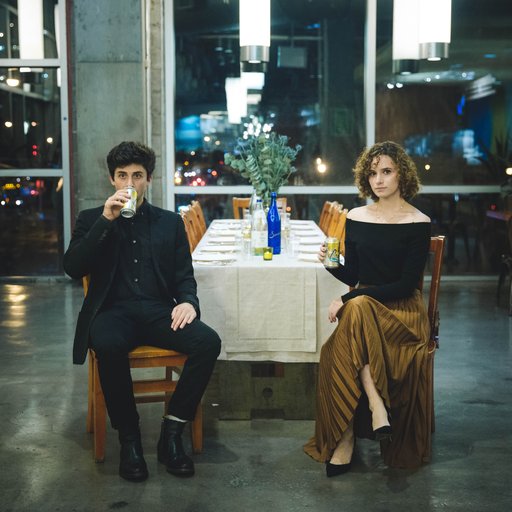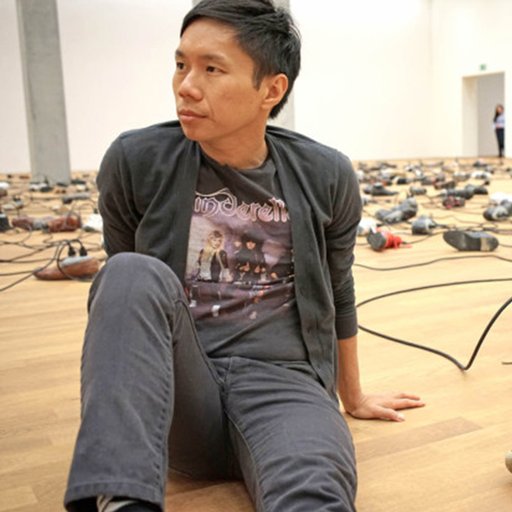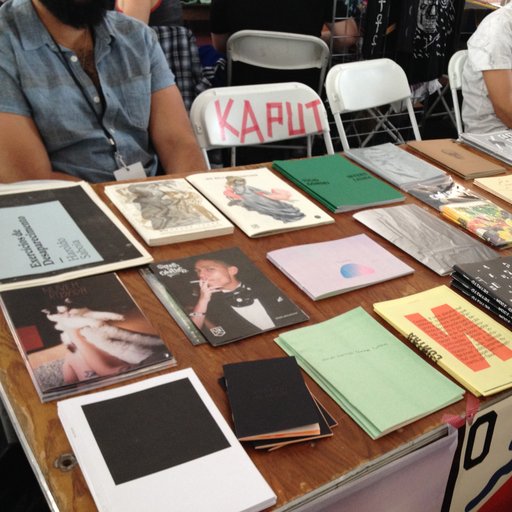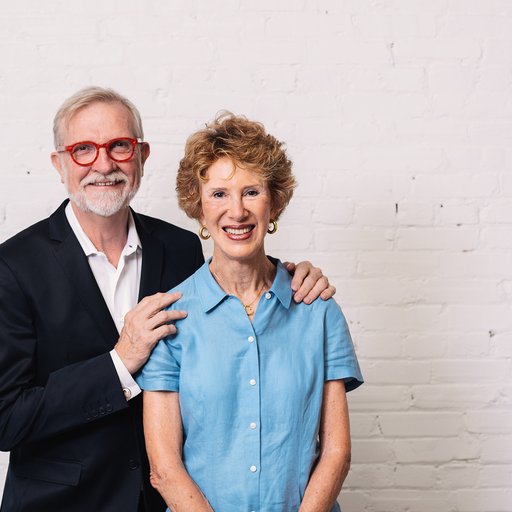The curatorial staff at the New Museum has a habit of presenting provocative exhibitions that explore culture as it happens. "Trigger: Gender as a Tool and a Weapon," curated by Johanna Burton, is the most recent in a string of exhibitions related to gender and sexuality that the New Museum has mounted since the '80s: “Extended Sensibilities” (1982), “Difference” (1984–85), “HOMO VIDEO” (1986–87), and “Bad Girls” (1994), to name a few. The show (on view until January 21st) pulls together artworks made within the last ten years by a 40-plus group of multi-generational artists, many of whom identify as queer or gender non-conformist, and two-thirds of whom are not represented by a gallery. Exploring "gender beyond the binary to usher in more fluid and inclusive expressions of identity," the artists in the exhibition take an intersectional approach to gender—one that considers "how even a fluid conception of gender is marked by ongoing negotiations of power and cannot be understood outside its complex intersections with race, class, sexuality, and disability."
"Trigger" opened just days before news broke of Harvey Weinstein's allegations of sexual assault, "triggering" a wave of mainstream attention on sexual abuse and harassment as epidemic. While topics related to gender and sexuality are on the tips of everyone's tongues these days, "Trigger" ignites a dialogue that couldn't feel more relevant—which is perhaps why it got quite a bit of media attention, not all of it positive. "Trigger" has received mixed reviews from critics, almost all of whom describe the show as "confusing," either as a positive descriptor (some critics have called gender confusing—so it makes sense that a show about gender would be confusing too), or as a negative one (due to a perceived lack of overall cohesion or a disconnect between individual works and the curatorial premise).
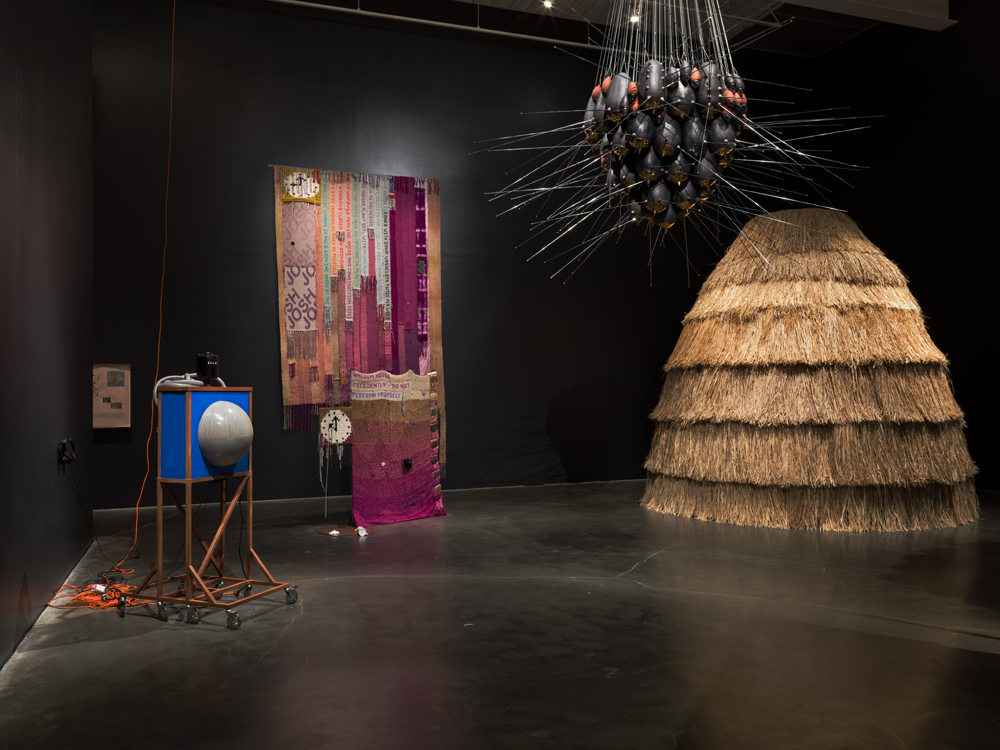 "Trigger: Gender as a Tool and a Weapon," 2017. Exhibition View: New Museum. Photo: Maris Hutchinson / EPW Studio
"Trigger: Gender as a Tool and a Weapon," 2017. Exhibition View: New Museum. Photo: Maris Hutchinson / EPW Studio
Here Artspace's editor-in-chief Loney Abrams speaks with Johanna Burton, Keith Haring Director and Curator of Education and Public Engagement, about her reaction to the press she's received, her insistence on using the word "destabilizing" rather than "confusing" to describe the works in the exhibition, how the #metoo movement has impacted perception of the works, and whether or not museums can instigate real social change.
The show is called “Trigger: Gender as a Tool and Weapon.” The word “trigger” has become a buzz word recently, but it has a range of meanings. Can you talk about what the title of the exhibition means to you?
There are a few reasons that this title ended up persisting. I say “persisting” because it was the first title that I thought of and then I kept trying to come up with other titles because it freaked me out a little bit—but I just couldn't come up with another title that did as much work. Things are obviously really tense in our culture right now, and it's hard to have difficult conversations that are productive. Instead, the conversations we're having are really painful and they don’t necessarily lead to social change. “Trigger” seems to be in the middle of all of those conversations. "Trigger” stands both for the thing that sparks a reaction, and the shutting down of conversation that might happen as a result. It also brings the elephant in the room and does some of that work without having to illustrate it.
In many ways, the show’s content is very far away from what you might expect to see, which I really like. The idea of triggering has become so associated with a breach of personal space or personal freedom, whether you’re invading someone’s space or someone's is taking yours. I thought it was interesting to put it out there and let it be a defining framework for this show and then find other ways forward in dialog. The show itself feels very hopeful and very serious, and it's also imagining political futures as much as it's considering the present moment.
The main methodology I've employed in my life as an art historian and critic (sometimes consciously and sometimes unconsciously) is psychoanalytic theory, which I inherit from feminist critics and the questions around post-coloniality for the past 50 years. The idea of the trigger also gets to the fact that so much of what we do comes from an unconscious place. Within that context is really interesting because it allows us to think about something that’s outside of the realm of discourse—something that’s a motor for how we act but that we can't always be aware of or accountable to. It allows for this older idea of the trigger too as something that you work through in a productive way or you keep returning to in this cyclical way. Like how do you not have the the thing trigger you the same way every time; how do you move beyond it? How do you allow for something to productively evolve? Not that many people are going to be interested in that context maybe but it's still interesting.
I read that you and some of the curatorial advisors were somewhat concerned that the show might actually be triggering for some people. What works, if any, were you particularly concerned about?
I was never really worried about the work triggering people in the sense that I thought there was content that was in any way inappropriate. There's something actually reassuring about having the museum filled with this kind of work for me right now. The secret agenda of the show is that it's just showcasing what I think are the best artists working today, and they happen to have a shared center in questions of identity and agency and representation. What I maybe had fear about was about whether the framework itself could be triggering and therefore keep people from seeing the texture of each of these works in and of themselves, because they're really strong and textured works that can't actually be boiled down to the idea of gender. So it was more of a curatorial concern rather than a concern over any individual piece needing an explicit sign or something like that.
Fred Moten, who is one of the conversants in the round table [featured in the exhibition catalog] suggested that maybe we have to stop being so afraid of triggering each other. We obviously have to be aware of each other as human beings in the world, but he made a joke that became something that we'd return to: what would it look like to try to trigger people? …Not in an irresponsible way, or maybe in an irresponsible way, I don't know. One doesn't know where a trigger is going to come from and that’s what’s hard; what triggers you is not my trigger. So it was a way of releasing ourselves from some of those concerns and at the same time trying to navigate both sides of that coin. Most of the work is actually not very explicit in any way (whatever that term means; it's not a term I use myself). Did you find any of the pieces triggering in any way?
 "Trigger: Gender as a Tool and a Weapon," 2017. Exhibition View: New Museum. Photo: Maris Hutchinson / EPW Studio
"Trigger: Gender as a Tool and a Weapon," 2017. Exhibition View: New Museum. Photo: Maris Hutchinson / EPW Studio
I saw the show during what I’ve been calling #Metoo Week. The accusations about Harvey Weinstien had just come out; so many of my peers were sharing their experiences of sexual abuse online with #metoo; then the not-surprised.org website went up after [former Artforum publisher] Knight Landesman got called out—and I brought to the exhibition all of this baggage, all of these experiences and emotions that I had been reliving and thinking about all week. I think that context, coupled with the title of the show, prepared me for a much more violent show than the exhibition I encountered. And no, I didn’t find anything triggering. I was actually struck by a noticeable lack of violence or trauma. Instead the show felt to me very celebratory and joyous—more about celebrating gender as a means of expression, celebrating gender and queerness as a spectrum ripe for representation in a variety of ways. It didn't feel like the artists were coming from a place of victimhood or oppression, which is I guess where I was coming from, in a way, when I entered the show. I think I was just expecting more violence, or resistance even; more work about gender as a form of social control, rather than a form of celebration or expression.
That's interesting. I think "celebratory" is not a word I would use because I don't think we have that much to celebrate right now. I'm working on a book that’s coming out next month called Trap Door about trans politics with folks like Reina Gossett, one of the artists in the show, and Eric Stanley, who is one of the advisory group members. They're both incredible activists, artists, and scholars, and there was an insistence when we worked on that book, that we did almost entirely new commissions because the state of the field is changing so much that we wanted an emergent vocabulary to be more prominent than something from even 10 years ago. Reina and Eric were both hyper-vigiliget in insisting that beauty, and glamor, and pleasure are central modalities of activist work, and this seems like a new moment in that way. I think definitely in the ‘80s and late ‘70s there was feminist work that tried to do that but it was punished for it. But I think in this new moment the idea of joy and pleasure is seen as acutely political because it's seen as crucial to being a human being in a way that may be new. So for me, the work has a lightness to some of it and a pleasure and a joy, but I think it's also entangled with pain and violence and fear.
That's something that is maybe not talked about as much because people come in and they think they're going to see all political art; my argument is that, you are actually seeing political art. I mean every single person in this show (and I've spent a lot of time with all of the them), would account for their work as very much in primary dialog with politics. But how that looks and how long-term survival operates is recast a little bit. There is this idea of endurance. Like, what do you do when you know things are going to be bad for a really long time? For a lot of people in the show, things didn't just get bad. I'm surprised when people act shocked that Trump was elected or these other bad things are happening… like, no things have been bad for a really long time. It's just reached a new level of visibility. I'm glad your asking this question about where to locate resistance in the show, and I think it's one strain of the show that I'm trying to push people towards. It's there an it's incredibly fierce and incredibly present, but it might not have quotation marks around the political in the same way that we're used to. But I'm still grappling with that myself a little bit, because I come out of a legacy of hard-core deconstructive, feminist images, which I still believe in too.
 Sharon Heyes,
Ricerche: three
, 2013 (still). Single-channel HD video, sound, color, with drawing; 38 min. Courtesy of the artist and Tanya Leighton Gallery, Berlin.
Sharon Heyes,
Ricerche: three
, 2013 (still). Single-channel HD video, sound, color, with drawing; 38 min. Courtesy of the artist and Tanya Leighton Gallery, Berlin.
The artwork that really captivated me the most, especially within the context of the #metoo moment, was Sharon Heyes’s video—where the artist asked questions about sex, sexuality, and gender to a group of students on the outdoor campus of Mount Holyoke college, an all-women’s institution. It’s such a straightforward and basic premise: to simply give young women a platform to speak about what they think and how they feel. It ends up feeling groundbreaking simply because it’s so not commonplace even though it feels like it should be. Women aren’t really given space to do that with such focus and gravity. Can you tell me a little bit more about that piece—like maybe what the artist’s intentions were, or even how you came across the piece and what you hoped it would add to the show?
Sharon is a good friend and I admire her work deeply. I've known for a very long time and I've followed her work for almost as long as I've been in New York and have had discussions with her that felt very central to this show. She's an example of an artist who’s a hybrid of this future-looking model that we're talking about but also goes back to tactics that you can really trace to a model from Mary Kelly, who she studied with, and other people. Yes, she’s very straightforward in a way but also has a strong sense of history.
That piece was one of a handful that wasn't commissioned for this show but was preexisting before the show. It was in fact commissioned by Massimo Gioni, who’s the artistic director of this museum, for his Venice Biennale two and a half years ago, and it hasn't been shown in the states until now—which is kind of interesting given the concept. Obviously she's been doing tons of this kind of direct reporting work that deals with the transparency of the interlocutor and the interviewee. But this particular piece is based on a Pasolini film where he spoke with people about sexuality many decades ago in Italy. As in many of her works, she gives a nod to a precursor but then changes the terms. What does it mean to have a feminist doing this work and going to an all-girls school when the very premise of a single-gender school has to be rethought? For me it was almost like including a marker in the show where you can sit and really think about the other things that are happening in other directions that might not immediately land on the topic of gender in the same way.
What I also admire about the rest of the artists in the show applies to Sharon too—that her thinking about gender can no way be disentangled from questions around class, and race, and sexuality. So this piece really felt perfect; she was one of the first artists that I asked to be in the show. She's also working on other iterations. This piece is called Richerche: three . There aren't one and two yet, so like Star Wars , they're out of order. Recently she's been workin with younger kids (between five and eight years old) to think about sexuality and gender. So I'm hoping (fingers crossed) that we'll see some of that soon.
From a curatorial perspective, how has the timing of this show influenced its reception? Obviously this show has been planned for however long and was always slated to open this month—but it just so happens that this month we’ve uncovered this widespread, systemic abuse of power through sexual assault and harassment Gender and power are at the forefront of conversation on a mainstream, national, and probably international level. Do you see, with everything that's happening, the timing of this show as serendipitous in that gender seems even more relevant now? Or do you see the timing as more negative in that it could constrain or limit the reading of the work, or that is could guide viewers' expectations in a way that isn’t followed through in the work?
It's an interesting question. When I started working on the show I was thinking about how this year is the 40th anniversary of the museum, and I feel really indebted to the founding director, Marsha Tucker, who made a platform for argument-driven shows like the one I made. I think there are two ways to look at shows that overtly consider culture as it's happening. One is to question whether it’s in dialog with the shifting contours of the day, and those shift very fast now. But more importantly, it's whether a show like this will register in twenty years almost like a case study. I can't anticipate how this show will look in 20 years from now, but I have faith that when there's distance people will take it for what it was, which was an experimentation in collaboration with a bunch of incredible artists who are each in their own way dealing with culture as it's evolving.
A lot of people have expressed feeling really grateful that they can come and spend time with work that in various ways provide alternatives to some of the things that are happening in the world today. A lot of the show is about collective strategies and new modes of family—and that's where a lot of the joy comes from. So it looks like, in a weird way, that I was better planed than I actually was. It was not on purpose really, it just seemed to me like gender was the thing that we should be thinking about and talking about right now.
 Ulrike Müller,
Others
, 2015. Vitreous enamel on steel, 15.5 x 12 in. Courtesy of the artist and Callicoon Fine Arts, New York. Private Collection.
Ulrike Müller,
Others
, 2015. Vitreous enamel on steel, 15.5 x 12 in. Courtesy of the artist and Callicoon Fine Arts, New York. Private Collection.
There are a lot of works that can be thought of as typical of the queer aesthetic (maybe because they’ve been coopted by mainstream culture in cases), works that incorporate glamor, drag, and camp. But there are also works—like Nancy Brooks Brody’s works, or Ulrike Müller’s works, which are both abstract—that are less obviously tied to gender or to querness. Some critics found this dichotomy to be confusing, incohesive, or disjointed. Other critics chalked this up to the presumption that gender is confusing. If you were to respond to the critics who characterized the show as confusing, what would you say?
I think there are two questions here, the first is: why abstraction and representation? You used the term "queer aesthetic" which is something I don't subscribe to; that's a mode of formalism that I'm not so interested in, but it's been used a lot particularly in terms of queer abstraction. It's an interesting debate: it asks whether you can locate queerness in an aesthetic, particularly an abstract aesthetic. Ulrike really thinks about the single and the group. So within all of those compositions you see forms coming together and pulling apart—and I'm not sure that it's necessarily about queerness (as much of the work is not). For me gender isn't only about gender non-conformity or queerness, but it's about thinking beyond the binary, and gender beyond sexuality.
There's a rug in the show that I really love and it's a beautiful wine-colored rug with these different colored traingles. When we were talking about the work she said, “Look at any one corner of any triangle and the rest will all follow.” There was this shift visually that happened when I did that and it makes you understand something about how single entities and group entities interact in the most profound way. She's part of a community of people that thinks really intelligently about how the manipulation of very small things in the visual plane can make you think very differently. She has started rounding corners in architecture, thinking about the gendered implications of just getting rid of a corner.
Nancy Brooks Brody is one of the founding members of Fierce Pussy, which is this incredible activist group that’s done a lot of interesting work around sexuality and gender and really is a pretty revolutionary group of people. Those paintings are called “glory holes” because they point to a sexual experience but also a spiritual one. And they are these incredible mathematically layered pieces that move in these two directions from the metaphysical to the physical.
To your second point about confusion: I found it really interesting that people use the word “confusing.” For me gender is not confusing and I think for most of the artists in the show gender isn't confusing—it is destabilizing. I've been really interested in the fact that rather than using the word “destabilizing” people have have been using the word “confusing” because it locates the confusion in the object rather than in the viewer. So if I say that a painting is confusing or gender is confusing, it's not my problem; somehow the thing is being asked to resolve itself instead. I think the opposite is happening and people are being destabilized in terms of their expectations for not just what gender does but what a show about gender should do. So I'm trying to flip that and ask, what would it look like if the thing itself is actually fully intact as itself (even if that means being internally mobile) and the confusion as it were is within a kind of a new address that it's asking for? But yeah, any critique of the show has called the work confusing, and some people have even said it's a good thing, but destabilizing is a better word to describe how I'd think about it.
 Patrick Staff and Candice Lin,
Hormonal Fog (Study #3)
, 2017. Smoke machine, fog fluid, and herbal tincture. Courtesy of Patrick Staff and Candice Lin
Patrick Staff and Candice Lin,
Hormonal Fog (Study #3)
, 2017. Smoke machine, fog fluid, and herbal tincture. Courtesy of Patrick Staff and Candice Lin
That's an interesting distinction. So, I was actually asking some of the guys at the front desk about this... Candice Lin and Patrick Staff made a smoke machine that pumps vaporized testosterone-lowering tinctures into the museum lobby. The piece is called Hormonal Fog . Have you observed or heard any observations from museum staff about how people react to this piece—physiologically or psychologically/emotionally?
Plant-based materials do actually exert a lot of change on our bodies. I mean, if we’re eating McDonalds it has an effect, often hormonal. But the piece is also very suggestive in the sense that the hormones in the cheese you eat probably has just as much an effect on you as the tincture. But the idea that you're breathing in something that's altering your testosterone levels is quite effective in having people talk about it. Some people don't know what testosterone does, which is super interesting. Some people assume that if you lower your testosterone you would grow breasts, rather than needing to add estrogen to do so. Hormonal Fog has actually come to produce some really interesting conversations. Some people get really excited and take on a political edge; people ask for pipes, as a joke, saying, “I would just stand here and inhale this all day.”
[Laughs] Right. Like, let's install these things everywhere!
Right. And other people get visibly uncomfortable and want to know if they actually need to be concerned about it. But mostly it’s lead to really interesting discussions. And the artists are really smart in figuring out a way to initiate an ideological discussion through a material in space that’s ephemeral.
 Pauline Boudry/Renate Lorenz,
Toxic
, 2012 (still). Super 16mm film transferred to HD, 13 min. Courtesy of the artists, Ellen de Bruijne Projects, and Galerie Marcelle Alix.
Pauline Boudry/Renate Lorenz,
Toxic
, 2012 (still). Super 16mm film transferred to HD, 13 min. Courtesy of the artists, Ellen de Bruijne Projects, and Galerie Marcelle Alix.
Something I found really interesting about this exhibition was the exploration of consumed chemicals or toxins. This was interesting to me in the context of a gender, which is something that’s socially constructed on the one hand, but is also very much about the physicality of the body. The body is made up of the things we allow inside of it, the things we consume. The works I’m thinking about are obviously the one we just discussed, but also Patrick Staff’s
Weed Killer
video, Pauline Boudry and Renate Lorenz’s video
Toxic
, and even
Vaginal Davis
’s works to an extent. What do you see as the relationship between toxins or ingestible chemicals, and gender?
I think you've hit on that something that's really important in the show. I also agree that gender is socially constructed but that we live in bodies—and our bodies are impacted by the way we think and vice versa. I think for a long time, some of those distinctions between social construction and material embodiment were separated. I think a lot of the artists that have brought that to bear here using ideas of toxicity and contamination are thinking about transmutation in a way that’s… “neutral” is the wrong word, but trying to keep at bay the good or bad distinction.
So the Boudry/Lorenz Toxic video that you bring up is really brilliant in that it's thinking about this idea of contamination or “passing.” For years there was this idea that homosexuality was something that you could catch. The artists are utilizing that in order to, with humor, think very politically and forcefully about what it would mean for that kind of toxicity and contamination to be productive and positive as a mode of world-building and community-building that goes beyond the biological imperative of reproduction. So it’s really brilliant and it’s also just such a funny video; it's so much about the drama of performing the self and what it looks like to play with that.
Josh Faught is up there on that floor too with the amazing knitted wall piece wherein he's thinking about day-to-day, banal household things and allergens, what we breath in, and what he have tolerance for and what we don't have tolerance for. In terms of Weed Killer , Patrick Staff is an amazing young artist who's working with Catherine Ward's book about cancer treatment. The weed killer is how she describes the chemotherapy drugs entering her system. So we can think about chemotherapy and hormone treatments together, without conflating them, as substances that can change the body for better or for worse, depending on the state you're in.
Do you think that art in museums can lead to actual social progress?
For sure art can produce social change. There’s power in the symbolic, and to be able to present representational strategies that don't exist elsewhere is incredible. It allows for cultural analysis that doesn't happen anywhere else. Institutional questions are always really interesting, though. I think there's often the argument that once it's in the institution it gets appropriated immediately and doesn't have power outside of the institution. On the other hand, as someone who came from rural Nevada and sought out images and sought out information, I know that the reach of an exhibition goes well beyond any building that it's in.
I also feel that the place of the museum has shifted so much. The positive side is that more people see art than ever before. The negative side is that the museum now is often conflated with other forms of entertainment. I'm an educator so I make shows, without even trying, that feel like they're just as important as the books that are made. I have to hold out belief that there's still an effect. But I do think that it's a slightly shifting terrain and I'm curious to see how we navigate what comes next. It is about asking people to look longer maybe, or maybe look differently, or feeling uncomfortable, or feeling a little confused [laughs]—rather than expecting to be entertained. The only time I get frustrated is when people don't recognize confusion as a space for growth and instead want to be affirmed in the beliefs they already have. So, yes, I'm hopeful! I think we have to be.











